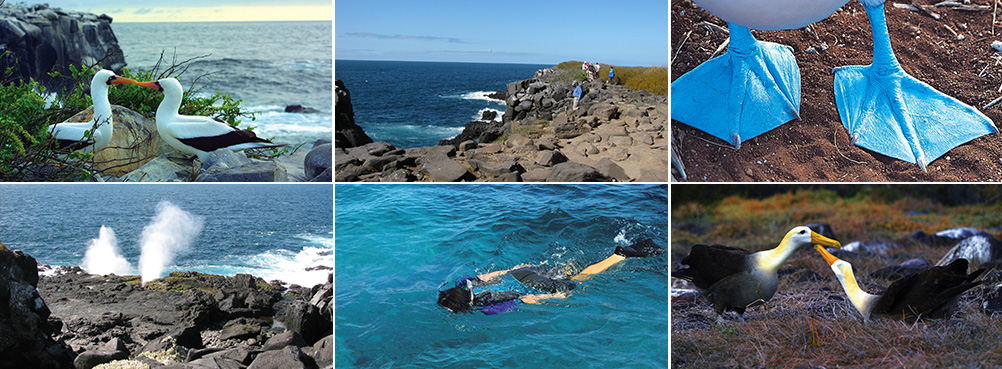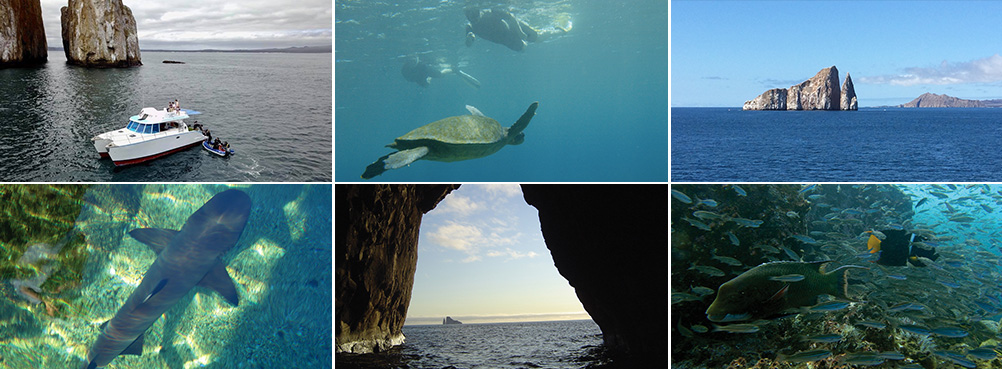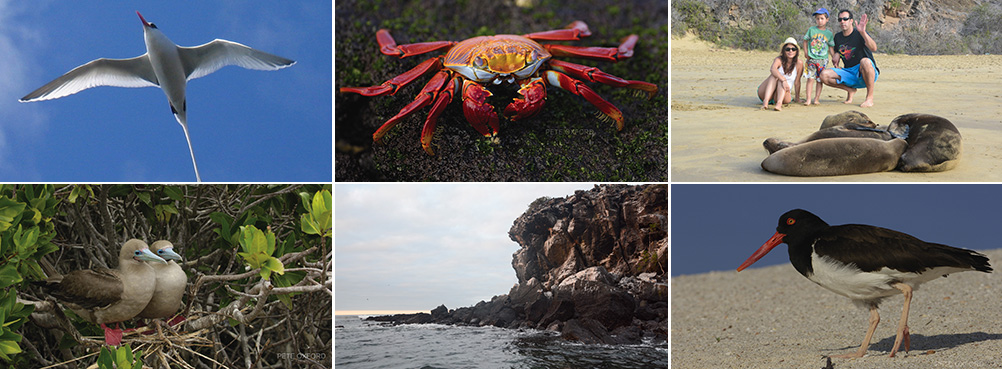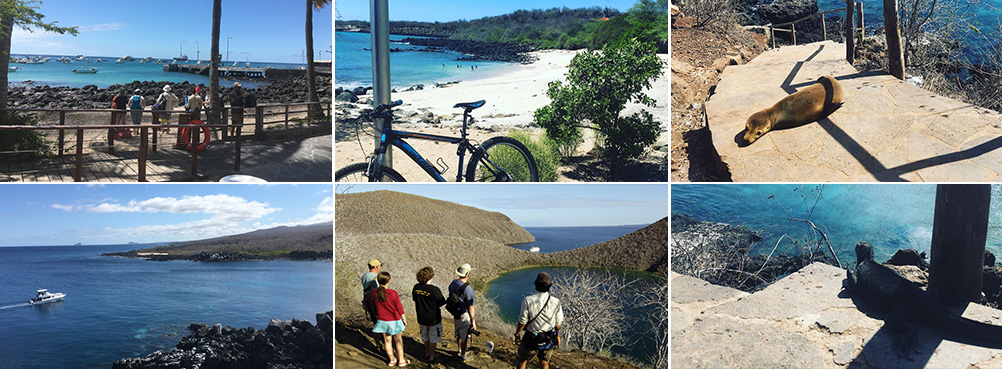San Cristobal
- Española Island
-

Albatrosses, Boobies and Others
Located two hours from San Cristóbal, Española is the southernmost island and one of the oldest in all of the Galápagos archipelago. The island’s flat profile is extremely dry with only a few inches of rain per yearNesting Blue-footed Boobie with eggs.
Despite the dry climate the island is one of the world’s only known nesting sites for the Waved Albatross (aka Galapagos Albatross). From April to December this island is covered with these adorably crossing the path of blue whales en route to Española island.
Another unique species found only on Española Island is the Green and Red Marine Iguana (also known as Christmas Iguanas). Quite often you will be greeted by these colorful reptiles. A visit to Gardner Bay for some open water snorkeling completes this island visit. Whale sightings are common (but not guaranteed) during the open water cruise to/from San Cristóbal Island.
- Kicker Rocks
-

The famous Kicker Rock or Leon Dormido a volcanic formation amid the ocean. One of the best spots in Galapagos to snorkel and diving with sharks, rays, turtles and if you are luck also with hammerhead sharks! After lunch on the boat you will go to a beautiful, pristine beach, where you will have time to relax. At afternoon you will be back at the town. Shared tour max 12 on board snorkel and diving.
- Pitt Point
-

Punta Pitt is located on the northeastern corner of San Cristóbal Island. The trail includes an olivine beach approximately 90 meters/295 feet and a trail that ascends to the top of a volcanic tuff hill passing through several natural viewpoints.
The walking trail is 1,400 meters/nearly one mile, with an estimated time of two hours, round trip.
Punta Pitt is composed of volcanic tuff substrate. High winds present there have led to a unique form of natural erosion.
This is the only site in the Galapagos Islands, where you can watch the three species of boobies and two species of frigates nesting in the same area. The reason that there are three species of boobies at Punta Pitt is due to the geographic location: there is enough food so there is no competition between them. The blue-footed boobies nest in the interior (rarely on the cliffs), red-footed boobies nest on bushes and masked boobies nest along the cliffs. Another added attraction is the presence of sea lions at the landing point, in the bay.
Staff of the Technical Office of San Cristobal, conduct periodic inspections of non-native animals especially cats and rats in this area. This is in order to avoid them preying on the lava lizards and the chicks of marine birds.
- Isla Lobos
- On a 30 min boat ride from the port you arrive on Lobos Island, as it name implies a home to a large sea lion colony. But that’s not the only thing you’ll find while you’ll hike and snorkel at the island on this half day tour. During the hike, you hopefully spot blue footed boobies, marine iguanas and frigate birds, while during snorkeling you can often see the marine iguanas eating, as well as rays and turtles in the sandy bottom that separates Lobos Island from the mainland of San Cristobal. This tour is includes a stop at Playa Ochoa. In the early afternoon you be back at the port.
- Firgatebirds Hill & Carola Beach
-

Visit the Interpretation Center, where the guide will talk to you about the formation, colonization and actual situation of the islands. Then you will follow the trail to the Frigate bird hill, a viewpoint from which you have a beautiful view over the island. You will be able to snorkel the shallow waters of Tijeretas Bay or Carola beach, according to the tide your guide will take you to the best spot, where you can see sea lions, various tropical fishes, and turtles. Your small hike will finish at Carola beach.
You will visit Loberia: a beautiful beach with a great snorkeling spot! During the snorkel you may find sea turtles, rays, sea lions and many species of colorful fishes. After that you will do a nice hike to a cliff where you can observe many marine iguanas and birds such as blue footed boobies, swallow-tailed gulls and frigate birds.
